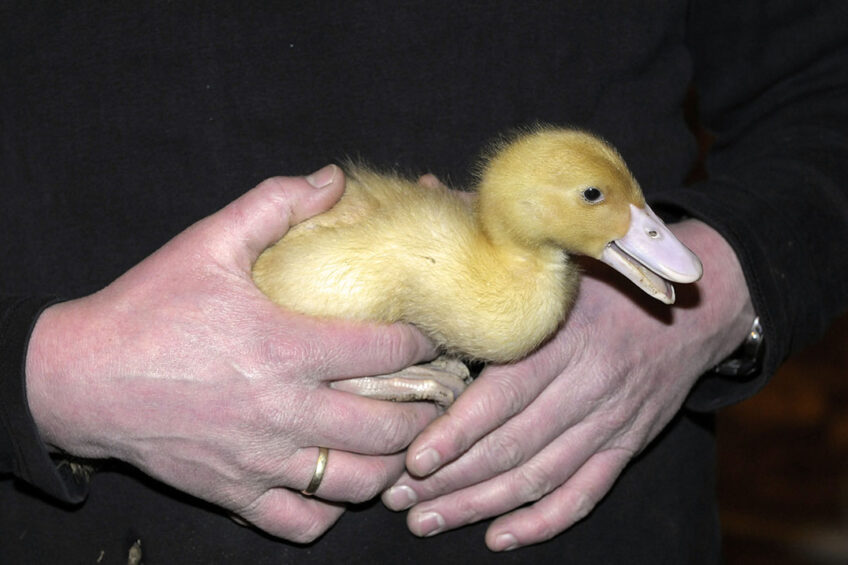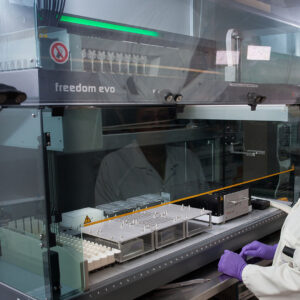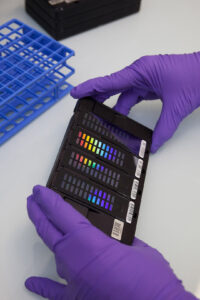Accelerating the genetic selection in ducks

In recent years, layer and broiler breeding have seen the introduction of genomics. For duck breeders, the wait was for the development of a microchip which could determine their specific traits. After the French INRA institute plotted multiple genetic lines, the long-awaited chip could finally be created. Duck breeder, Grimaud Frères, has hatched its first ducklings combining traditional genetics with genomics.
“I am very excited that we could implement this new technology in our breeding programme. Some see genomics as the holy grail, but that is exaggerating it a bit. It is a valuable extra tool in our toolbox, however, to be able to select the best breeding stock and accelerate genetic progress, especially for traits that are hard to select for using traditional genetics,” says Guillaume Le Mignon, Grimaud Frères R&D engineer.

For years he has seen his colleagues at Grimaud’s subsidiaries Novogen (layers) and Choice (pigs) use genomics to aid their selection without being able to tap into the same resources himself. “We saw what was possible and the proven return on investment on this rather expensive technology. However, the issue was that we didn’t have the genomic makeup of ducks available.”
Le Mignon knows that given the limited market share of duck in the worldwide animal protein chain, he had to be patient. Genomic programmes require significant forward planning – Grimaud Frères selected its most strategic lines more than 5 years ago to introduce genomic selection for them. The DNA of all the breeding stock of these lines was collected and then stored cold to create what are known as ‘reference’ populations composed of thousands of individuals. It was from these very specific populations that a sub-sample of SNP (single nucleotide polymorphism) markers – which had been specifically selected according to certain implicit criteria, such as origin, quality of hybridisation or more technical criteria, like allelic frequency and position on the genome – could be included on a ‘high definition’ (HD) chip.
Line specific chip
“From the HD chip with a whole string of traits, we had to develop a low density chip which is specific to each breeding line and has 60,000 datapoints. For Muscovy and Peking this is pretty straightforward, but for Mule ducks it’s a little more complicated. Some say the cross between Muscovy and Peking duck is like a cross between ducks and chicken and that you never know what the exact outcome will be. That said, the expected benefits of using genomics are there.”

Grimaud Frères has seen a rapid acceleration in genetic progress thanks to potentially higher selection pressure, faster estimation of future breeding stock (shorter generation interval), and greater accuracy of the genomic values compared to the genetic values. And there is more effective selection of complex traits and measurable traits late in an animal’s life (e.g., behaviour, mortality, brooding, meat quality, laying potential of breeding males, etc.) or traits with low heritability.
Mignon believes progress can be made more quickly: “With a blood sample taken directly after hatch you get information about the hereditary values of the bird instead of having to wait until the end of production. You can get immediate insight into the potential laying performance of male offspring instead of having to wait for their female offspring and wait again to see actual performance later in life. It’s all in the genetics.”
Hand in hand
Le Mignon is clear that genomics will never replace traditional genetics. “Both techniques will go hand-in-hand and complement each other. We will always use our CT scans for breast meat yield, our RFID chips for measuring feed intake and all other selection criteria to validate the results of genomics. But it is also important to always use the tool that makes the most economic sense. We know that we can select for body weight gain and feed conversion ratio with our genetics. It would not make much sense to rely on genomics for that.”
According to the geneticist, it’s a matter of using the annual € 200,000 investment wisely. “The fact that we are using it means we believe in it. We do expect to see additional genetic progress of 5-10% year-on-year. That’s huge in the field of genetics.”
Le Mignon is sure that genomics will keep on improving and expanding to include different traits and more genetic lines. “It’s a work in progress to find all the molecular markers and their interactions and how they affect the final performance of our ducks. Quite exciting really.”












